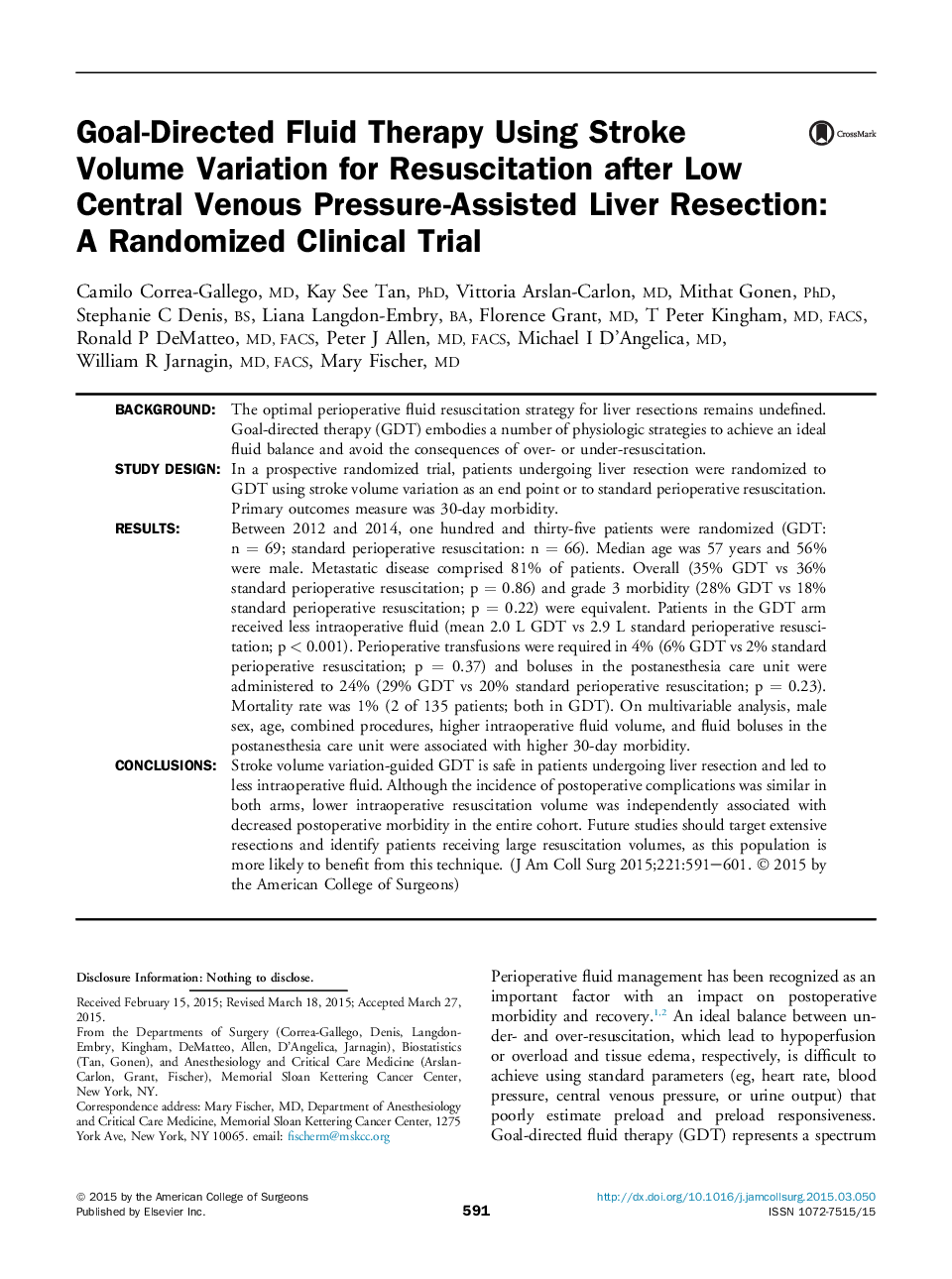| کد مقاله | کد نشریه | سال انتشار | مقاله انگلیسی | نسخه تمام متن |
|---|---|---|---|---|
| 6252686 | 1612217 | 2015 | 11 صفحه PDF | دانلود رایگان |
BackgroundThe optimal perioperative fluid resuscitation strategy for liver resections remains undefined. Goal-directed therapy (GDT) embodies a number of physiologic strategies to achieve an ideal fluid balance and avoid the consequences of over- or under-resuscitation.Study DesignIn a prospective randomized trial, patients undergoing liver resection were randomized to GDT using stroke volume variation as an end point or to standard perioperative resuscitation. Primary outcomes measure was 30-day morbidity.ResultsBetween 2012 and 2014, one hundred and thirty-five patients were randomized (GDT: n = 69; standard perioperative resuscitation: n = 66). Median age was 57 years and 56% were male. Metastatic disease comprised 81% of patients. Overall (35% GDT vs 36% standard perioperative resuscitation; p = 0.86) and grade 3 morbidity (28% GDT vs 18% standard perioperative resuscitation; p = 0.22) were equivalent. Patients in the GDT arm received less intraoperative fluid (mean 2.0 L GDT vs 2.9 L standard perioperative resuscitation; p < 0.001). Perioperative transfusions were required in 4% (6% GDT vs 2% standard perioperative resuscitation; p = 0.37) and boluses in the postanesthesia care unit were administered to 24% (29% GDT vs 20% standard perioperative resuscitation; p = 0.23). Mortality rate was 1% (2 of 135 patients; both in GDT). On multivariable analysis, male sex, age, combined procedures, higher intraoperative fluid volume, and fluid boluses in the postanesthesia care unit were associated with higher 30-day morbidity.ConclusionsStroke volume variation-guided GDT is safe in patients undergoing liver resection and led to less intraoperative fluid. Although the incidence of postoperative complications was similar in both arms, lower intraoperative resuscitation volume was independently associated with decreased postoperative morbidity in the entire cohort. Future studies should target extensive resections and identify patients receiving large resuscitation volumes, as this population is more likely to benefit from this technique.
Journal: Journal of the American College of Surgeons - Volume 221, Issue 2, August 2015, Pages 591-601
